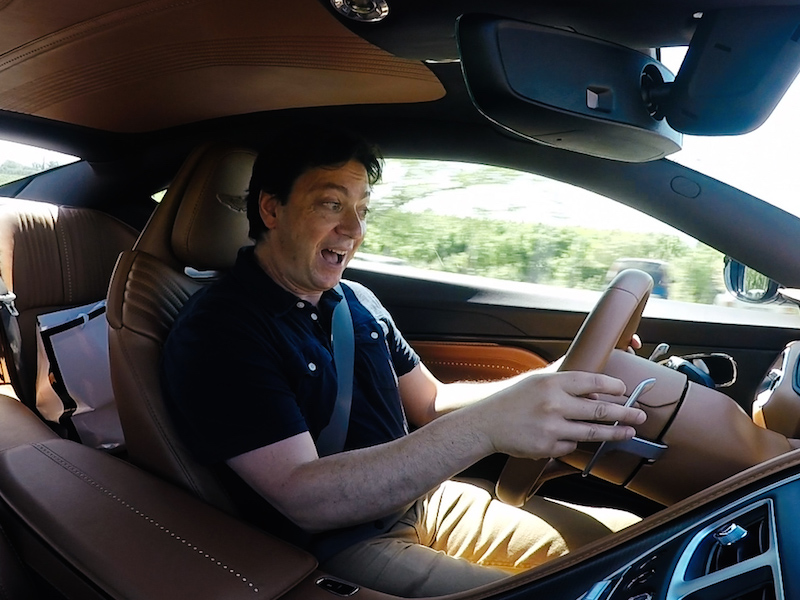We may earn revenue from the products available on this page and participate in affiliate programs. Learn more ›
Buying an Aston Martin once meant sacrificing state-of-the-art tech for visceral thrills and timeless beauty. And when we say “timeless,” we mean that almost literally. The platform underneath the DB9, which until recently was Aston’s bread-and-butter GT car, was in development back when Justin Timberlake (and seemingly every other 35-year-old pop star of today) was doing the Macarena on The Mickey Mouse Club.
Now, with its finances secure and a new partnership with Mercedes-Benz percolating in the background, Aston’s looking toward the future, the first hints of which it recently revealed to the media at a gorgeous villa in Tuscany. That is, the DB9’s replacement, the DB11.
The DB11 looks every bit an Aston Martin in the classic long-nose-short-tail sense, but its underlying construct has undergone a major rethinking. A newly developed platform of bonded aluminum uses fewer extrusions and more stamped-metal pieces, allowing for incrementally more interior space. Fresh electronics, provided by Daimler, enable thoroughly mod-cons like a TFT dash cluster, a usable nav system, and network speeds brisk enough to run a new generation of performance aids.
Equally, the driving experience represents a leap forward. A company-designed, twin-turbocharged 5.2-liter V12, replacing the previous 5.9-liter NA one, produces more torque under 2,000 rpms than the current V12 Vantage does at 5,500. Throttle response feels only slightly muted behind the turbo spool, but the new 0-30 punch is undeniable, and addictive. The smooth and accurate ZF 8-speed proves it’s still the best thing to happen to automatic transmissions since the planetary gear set. Best of all, the 12-banger still emits a sweet mechanical growl at wide open throttle (especially with the bypass flaps open in Sport Plus mode).





Although the DB11 retains older Astons’ propensity to get light in the tail under braking, the DB11 has a new torque-vectoring system that helps rotate the massive GT more accurately around tight Italian b-curves. The Bilstein shocks’ adaptive damping has been calibrated expertly throughout the GT, Sport and Sport Plus settings. Even at its most aggressive, the suspension manages wheel location while allowing enough compliance to absorb harsh terrain, maximize traction during compressions, and preserve sore spines. Even better, the controls for damping profiles and throttle and transmission-shift maps are now separate, so you’re not stuck with all-encompassing presets like in the past.
The DB11’s new design is equally clever, particularly with aerodynamics, while retaining classic Aston Martin GT curves. At the front, air pressure inside the wheel wells is dissipated via vortex-generating vents. At the rear, twin channels send air through openings at the DB11’s two C-pillars, down into the body via ductwork, and out through a pair pf trunk-lid vents, eliminating the need for a downforce-inducing—and some might say juvenile-looking—fixed wing.
In all, the DB11 is exactly the right amount of new, mixed with a comforting application of old. If this is a signal of what’s to come from Aston Martin, the company will undoubtedly live to see a new generation of tween pop stars rise to become insufferable adult celebs.

